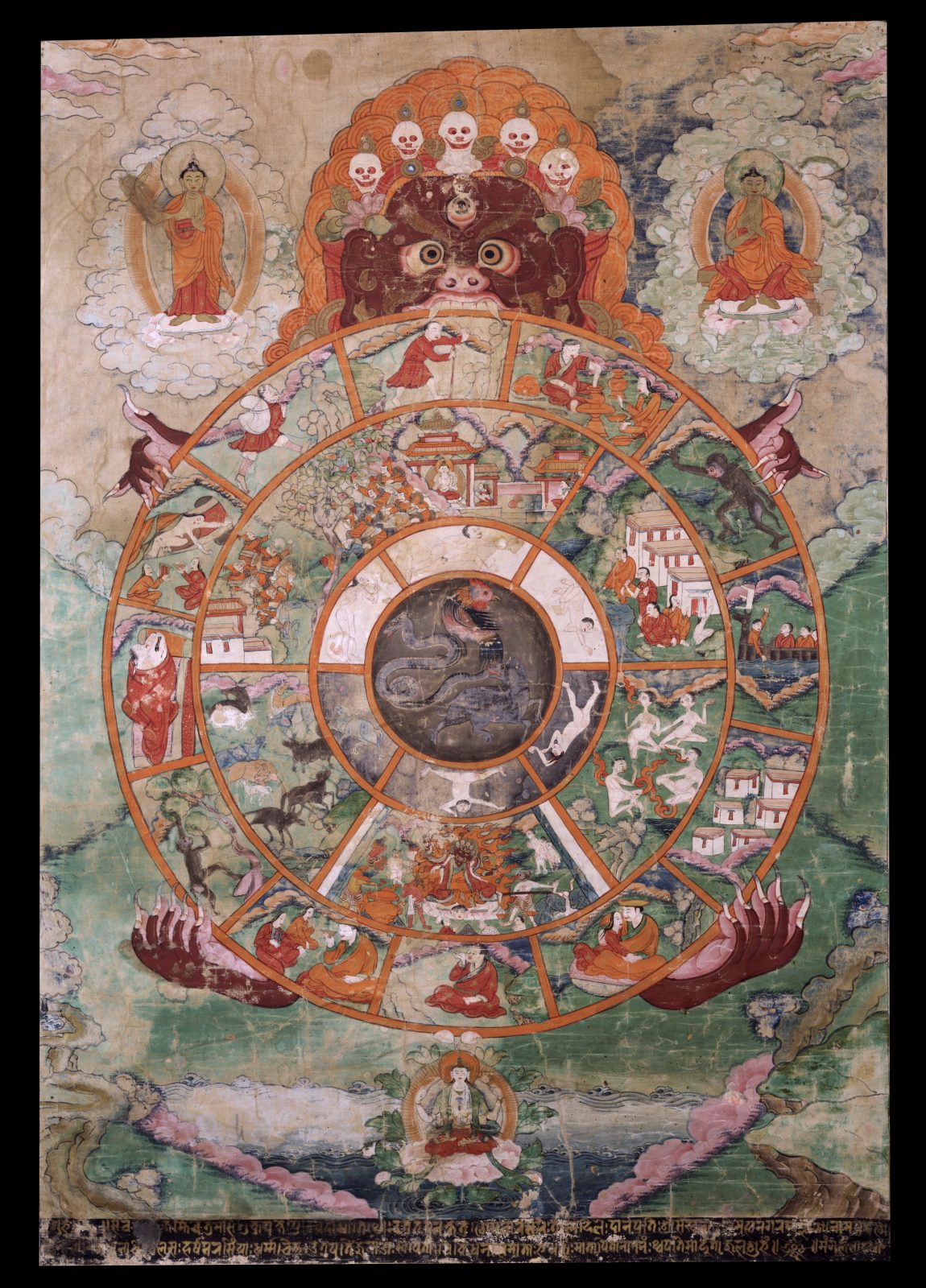

This week’s meditation session is led by Tracy Cochran and the theme is Impermanence. The guided meditation begins at 17:48.

Wheel of Life; Tibet; 18th century; Pigments on cloth; Rubin Museum of Himalayan Art, gift of the Shelley and Donald Rubin Foundation; F1997.40.10
In Tibet, the Wheel of Existence is the most ubiquitous visual teaching tool that explains the cyclical process of life, death, and rebirth. The scenes within are pictorial expressions of the impersonal laws of karmic cause and effect, that ones’ own actions, both virtuous and wicked, bring about reward and retribution and will determine our fate in the next life.
While the ultimate goal in Buddhism is to escape this cycle of rebirth by attaining enlightenment, Tibetans recognize this as almost impossible for ordinary people to achieve, and so their first priority is to try to avoid a negative rebirth. The Wheel of Existence diagram is labeled below to help identify the six possible realms of rebirth and the affliction associated with each realm. At the center are the three root causes of this cycle of birth, death, and rebirth depicted as animals.

Tracy Cochran has taught meditation and spiritual practice for many years. She is a speaker and author whose most recent book, Presence: The Art of Being At Home in Yourself, was published by Shambhala Publications in 2024. Tracy is the founder and leading teacher of the Hudson River Sangha and has taught mindfulness and mindful writing at New York Insight, the Rubin Museum of Himalayan Art, and many other venues. In addition to serving as the editorial director of the acclaimed spiritual quarterly Parabola, her writings have appeared in The New York Times, New York Magazine, Psychology Today, The Best Spiritual Writing series, Parabola, and many other publications and anthologies. For more about Tracy, please visit tracycochran.org and parabola.org.
Get the latest news and stories from the Rubin, plus occasional information on how to support our work.